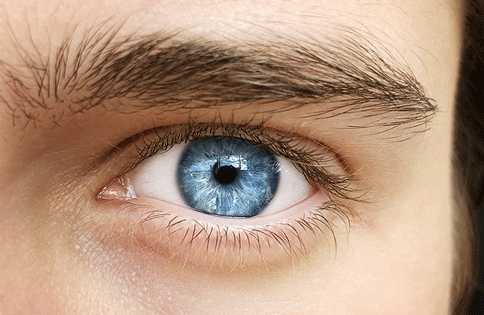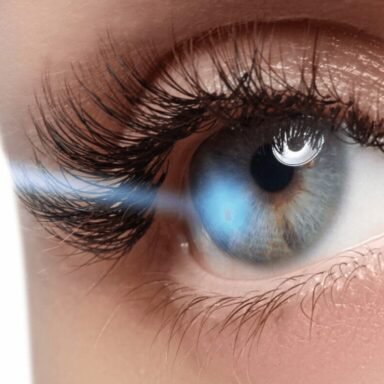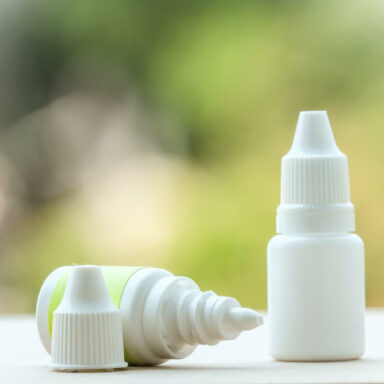If you’ve had a good read through Ocutears.co.uk, then you already know a great deal about eyes, but we’ve still got a few more facts up our sleeve. Today, we’ve teamed up with RNIB to celebrate the launch of their new Dry Eye booklet, to bring you some surprising extra nuggets about your eyes.
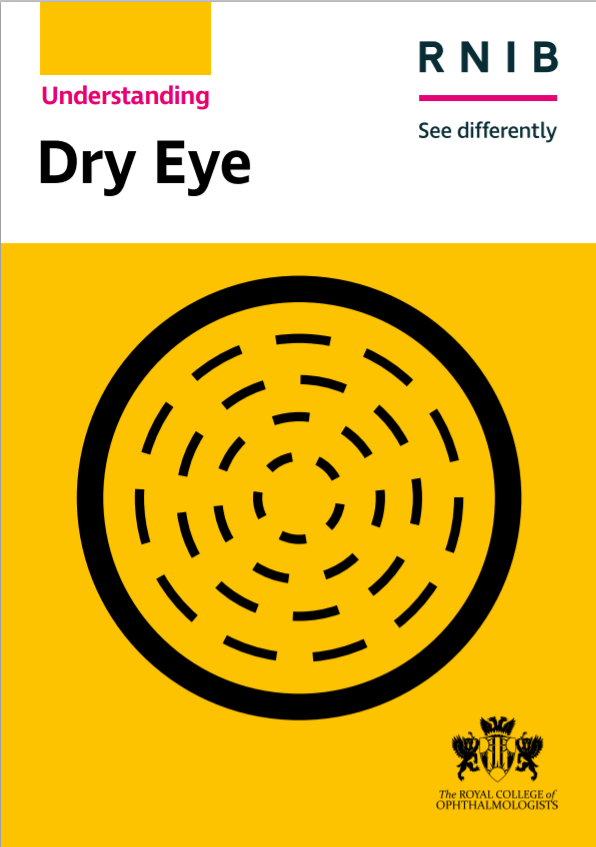
Their Dry Eye guide, sponsored by Santen, is the latest addition to their Understanding series, each covering a different eye condition in audio, print and braille formats, as well as a PDF. Developed in collaboration with the Royal College of Ophthalmologists and PIF TICK approved, they’re comprehensive, easy to read and, most importantly, from a source you can trust!
Here are a few facts inspired by the Dry Eye Booklet and their other guides that will surprise and inform!
1. Dry eye’s official name has Roman origins

Dry eye’s official medical name is the lengthy keratoconjunctivitis sicca.1 Like so many of our medical words it’s Latin and literally means “dryness of the cornea and conjunctiva”. The sicca part means dry.
But why do we use a dead language to define our health terms? The answer is in ancient history. The Greeks were founders of rational medicine in 5000 BC and many of the names they gave to diseases are still around today such as arthritis.2
When Greek medicine spread to Rome and was adopted by the Romans, many Latin terms started to take over and all medical texts were written in Latin. Today, Latin is a sort of international language for medicine and our anatomy terminology is almost all Latin!2
“Medically, dry eye is known as keratoconjunctivitis sicca.” – RNIB Dry Eye Guide
2. Your tears are fatty (and salty)

Just like our favourite snacks, tears are fatty and salty. They also have mucus too which makes them sound far less appetising.
Our eyeballs are covered in a film of tears to help lubricate and moisturise them. This includes an aqueous layer (the watery part), electrolytes (the salty-tasting part), mucus and an oily layer.1 Each part is important in its own way, for example, the oily layer helps make the surface smooth and reduces the evaporation of the water.3 When the tear film layers aren’t balanced correctly, you’ll notice because your eyes will feel itchy, dry and sore.
“The tear film is made up of three main layers: the mucin (mucus) layer, the aqueous (watery) layer, and the lipid (oily) layer” – RNIB Dry Eye Guide
3. It takes six muscles to move each of your eyes
You’ve probably never thought of flexing your eyeball muscles, but we do it almost every waking moment and even when we’re asleep. Six muscles are attached to the outside of each eyeball which allows us to move the eyes in all directions.4,5 They’re team players too – both sets for the left and right eye work together so your eyes are pointing in the same direction.4
There are also times when you can make your eyes point in different directions, like when you try to read something very close to your face or when you try to look at the bridge of your nose.4 It’s important we can do this so we don’t see double. And if you’ve got children that like to cross their eyes for fun, don’t worry, it won’t cause permanent damage! Like exercising any muscle, it will just tire them out.
The movement of each eye is controlled by 6 muscles that move your eyeball in different directions – RNIB Childhood squint guide
4. Our eyes need to breathe1

Bloodshot eyes are a classic sign that your eyes are not getting enough oxygen, specifically your cornea – that’s the clear front bit that covers the surface of the eye.
While our lungs do an excellent job of breathing for us, they don’t actually supply any oxygen to our corneas. That’s because they don’t have any blood vessels in them (they need to be clear, so that makes sense!). Instead, they get oxygen from the surrounding air and also release CO2 via the same process. Without enough oxygen, the cornea will warp, become less transparent, be less able to detect pain and can develop scars.7 A tell-tale sign is dry eyes and a sore gritty feeling, as well as redness.
When we sleep, our eyes get just a third of their usual oxygen!6 This is why your eyes are driest in the morning, but quickly recover over the next few hours. Similarly, contact lenses can restrict oxygen to the eyeball. Contact lenses nowadays are a lot more permeable to allow more oxygen to pass through to the eye. If you find them uncomfortable, we’ve got some tips for relieving dry eyes from contact lenses.
“Evaporative dry eye … can be caused by…contact lens use” – RNIB Dry Eye guide
5. Menstruation can affect eyesight

We probably associate cramps, bloating and chocolate cravings most with PMS, but the hormone changes can also affect the eyes too. The sex hormone oestrogen rises in the first week of menstruation and is to blame for temporary blurred vision, watery eyes and trouble focusing. To make matters worse, some people experience menstrual migraines in the 2 days leading up to a period or the first 3 days during a period when oestrogen drops.8 These can include visual problems – such as seeing flashing lights, zig-zag patterns or blind spots.9 If these symptoms are new or become difficult to manage you should always seek advice from a medical professional, such as your GP.9
Stopping periods isn’t without eyesight obstacles too. In pregnancy, baby hormones can mean you produce fewer tears, leading to dry eyes.10 But don’t worry it’s not permanent and usually disappears as soon as the little one arrives.10 Similarly, the menopause can also cause dry eye because of hormone changes and being older than 50 increases your risk of dry eyes, regardless of your sex.11 Learn more about the triggers and risk of dry eye.
“Changes in hormonal levels such as in pregnancy and menopause can contribute to dry eye.” – RNIB Dry Eye guide
6. As we age, we get less good at blinking

Blinking is essential to protect our eyes: each blink removes any debris like dust, spreads our lubricating tears over the surface of the eye and brings fresh oxygen to the cornea.12 We do it automatically around 15 – 20 times every waking minute, totalling up to 1,200 times an hour!12
When we get older our eyelids aren’t as good as spreading the tears each time we blink. Research shows that while older people blink as much as their younger counterparts, the duration and amplitude of the blinks are less.13
Sagging eyelids also mean that some people end up doing incomplete blinks, where the lids don’t fully close.14 That allows certain parts of the eye to become dryer. We also don’t produce as good quality tears – so the delicate balance of water, electrolytes, mucus and oils is less moisturising.14
“As we age, our eyelids aren’t as good at spreading tears each time we blink.” – RNIB Dry Eye guide
7. Your eyes and brain are still learning to work together until you’re 8-years’ old!4
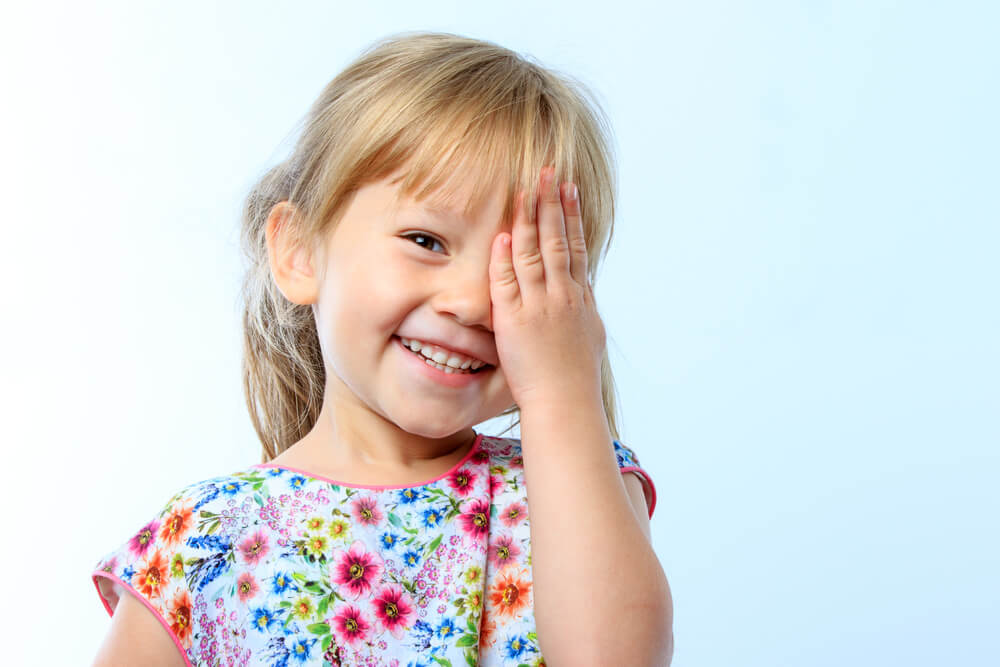
That’s right – When you’re born your eyes and brain don’t know how to work together! It’s why babies’ eyes appear to squint or move separately from each other now and again. It takes 2 – 4 months for this to get better but years for the eyes to fully learn how to collect information and for the brain to process it (this is important for coordination and for them to work as a pair to see things in 3D). This collaboration is known as the visual pathway and it develops throughout childhood up to the age of 8 years old.4 It might be why children appear a little less coordinated or even clumsy when they’re young! And why it’s important for them to practice hand-eye coordination from a young age.
A childhood squint may not be noticeable all of the time, so it’s important that children have regular eye examinations, particularly if there is a family history of it or of learning disabilities.4
“The visual pathway develops throughout your childhood and up to the age of about 7 or 8 years old. During this time it’s important that your eyes send clear and similar images to your brain.” – RNIB Childhood Squint guide4
These facts were inspired by the RNIB Understanding Series, guides about common eye conditions such as Dry Eye, Glaucoma, Cataract and Childhood Squint. They’re free to download and you can also order print versions from their website shop. RNIB’s website has in-depth information about more than 30 different eye conditions, including Childhood Squint.
RNIB Dry Eye guide
The new Dry Eye guide, sponsored by Santen is available here as a PDF, or to order in their shop, here.
RNIB is one of the UK’s leading sight loss charities and the largest community of blind and partially sighted people.
Santen UK&I, the creators of Ocutears.co.uk will be sponsoring the ‘Community Contributor of the Year’ category at this year’s RNIB See Differently Awards, a ceremony that recognises and celebrates those who are dedicated to improving the lives of blind and partially sighted people.
Ocutears.co.uk was developed with an expert team to share fact-checked information that you can trust to help protect your eyes and keep you feeling and looking at your best. Find out more about Ocutears and Santen.


